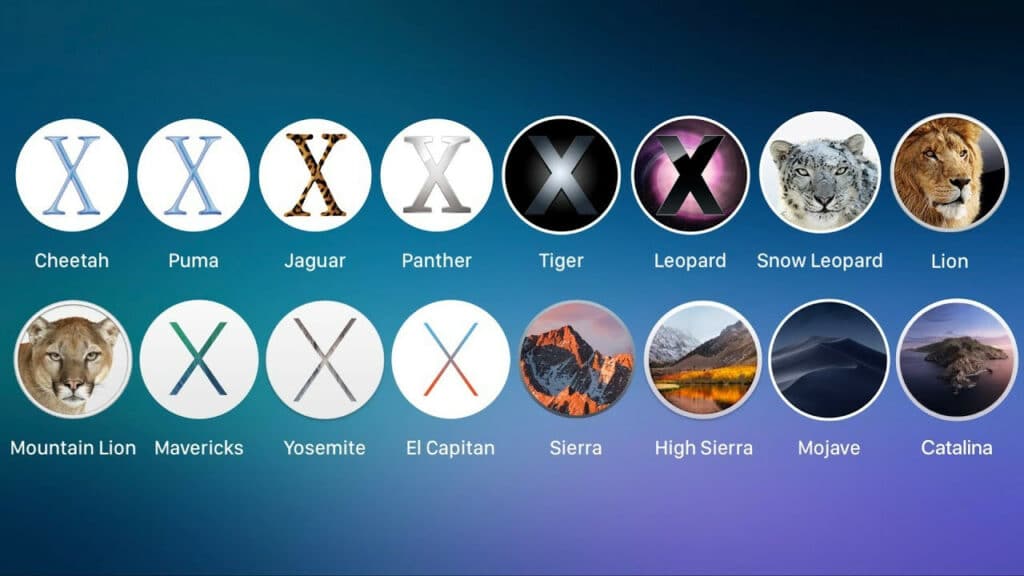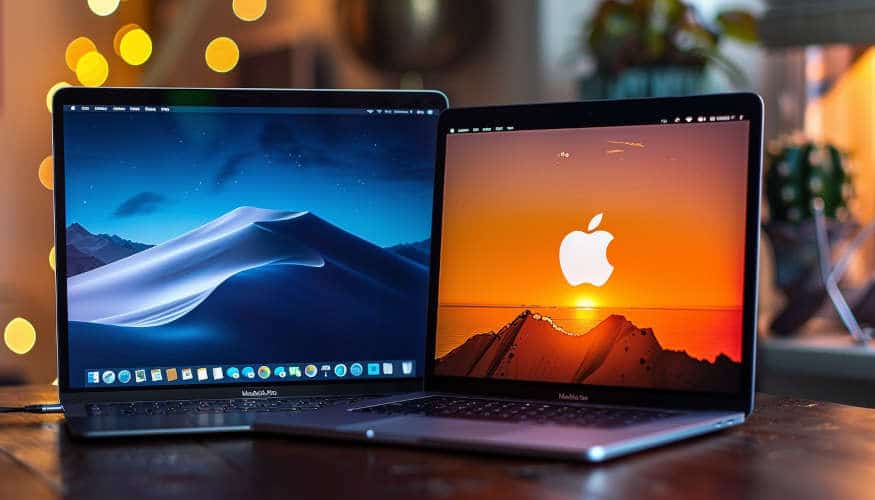MacOS is the operating system for Apple's computers, used by millions worldwide, but is it a good choice for Data Science or software development? Discover everything you need to know about this OS, its history, and its perks compared to Windows or Linux.
Since its creation in the 1980s, macOS has grown into one of the most beloved operating systems, boasting over 100 million users globally.
Its intuitive user interface, remarkable stability, and seamless integration with Apple’s ecosystem — iPhone, Apple Watch, iCloud, among others — have endeared it to users everywhere.
As of today, more than 10% of PCs and laptops are Macintosh, hinting that you’ve likely encountered one at some point… but how well do you truly understand this OS?
Join us as we delve into its captivating history and features that distinguish it from the competition, demystifying it completely for you!
The history of macOS
The journey began in 1984 with the launch of the Macintosh. Initially dubbed System Software, it set the stage for the modern graphical user interface.
In 1997, the operating system was officially named MacOS, coinciding with the launch of version 7.6. Its pioneering user interface, coupled with a reliable architecture, swiftly captivated users.
Thus, it earned a reputation as a dependable and user-friendly OS. As the years passed, MacOS received numerous updates that introduced new features, enhanced performance, and fortified security.
The debut of macOS X in 2011 signified a crucial turning point, introducing a Unix kernel for increased stability and features like Spotlight, Time Machine, and Launchpad.
This version was inspired by NeXTSTEP, a Unix-like OS developed by NeXT, a venture co-founded by Steve Jobs following his initial departure from Apple in 1985.
Upon his return in 1997, Jobs brought the innovative technologies from NeXT, laying the groundwork for Mac OS X.
Highly notable releases include Mac OS X 10.0 Cheetah in 2001, introducing the Aqua interface and the Dock, and Mac OS X 10.3 Panther in 2003, significantly boosting performance while adding features like Exposé and an enhanced Finder.

In 2005, Mac OS X 10.4 Tiger unveiled Spotlight and Dashboard, a dedicated widget area. Meanwhile, version 10.5 Leopard, launched in 2007, brought Time Machine and Intel processor support.
Further, in 2011, Mac OS X 10.7 Lion introduced Launchpad and Multi-Touch gestures, alongside full-screen applications.
Equally notable, OS X 10.10 Yosemite in 2014, showcased a significant visual redesign, the Notification Center, and Handoff, enhancing continuity across Apple devices.
To unify its ecosystem, Apple rebranded its OS to macOS in 2016, aligning with iOS, watchOS, and tvOS’s naming convention.
The inaugural version under this new name was macOS Sierra, integrating Siri into Mac and magnifying device continuity. Since then, macOS has continued to evolve with releases like High Sierra, Mojave, Catalina, Big Sur, and Monterey.
The OS is constantly being updated, adapting to evolving user needs and technological advancements. The most current version is Sonoma, from 2023.
What are the strengths of macOS?
Among macOS’s most celebrated features is its simultaneously elegant and intuitive user interface. Its sleek design, recognizable icons, and fluid navigation offer a cohesive and delightful experience.
Designed with the user in mind, it facilitates easy navigation and task execution, even for newcomers. Multi-Touch gestures and the Touch Bar on the latest MacBooks enhance user interaction significantly.
Furthermore, macOS users experience fewer crashes or significant bugs than other operating systems, ensuring a smooth computing journey.
Optimizations in software and hardware afford high performance, energy efficiency, and superior memory management. Apple’s shift to self-manufactured chips for Macs has further deepened the synergy between the OS and hardware.
Another substantial benefit is its integration within the Apple ecosystem. With features like Continuity, Handoff, and Airdrop, transitioning between devices is seamless.
Users can synchronize their data, applications, and settings among their Mac, iPhone, iPad, and Apple Watch.
Moreover, macOS comes with a comprehensive suite of built-in apps geared towards productivity and creativity. Applications such as Mail, Calendar, Photos, and iMovie equip users with robust tools for daily operations!

Additionally, macOS prides itself on a secure architecture that safeguards users against online threats and malware. Its foundation on a robust Unix base offers durability and resilience.
Features like Gatekeeper, which verifies downloaded application sources, FileVault, encrypting data, and Safari Sandbox, further ensure data security and user privacy.
macOS has long been celebrated as the safest OS, considered nearly impervious to hacking. Sadly, as cybercriminals grow more resourceful, this reputation has come under challenge…
An operating system that stands out
Beyond its advantages, macOS possesses unique attributes that boost its appeal and functionality. Its Unix kernel base contributes to its remarkable stability and broad compatibility with software and peripherals.
The Apple File System (APFS), introduced with macOS High Sierra, caters to modern device requirements by furnishing enhanced performance, effective storage management, and advanced security features such as native encryption.
An array of native and exclusive apps, including Safari, Mail, Messages, Calendar, and Photos, offer a seamless experience, while many popular third-party apps, including Final Cut Pro and Logic Pro, are exclusive to Mac.
Spotlight enables swift file, app, email, and more searches, with smart predictions streamlining navigation and information access.
The Automator tool empowers users to automate repetitive tasks without coding, enhancing time efficiency and productivity through customized workflows.
Vital too are the accessibility features, like VoiceOver, which vocalizes the screen for users with vision impairment, and extensive customization for individuals with learning difficulties or limited mobility.
Additionally, macOS and iOS developers have access to the integrated development environment Xcode, simplifying app creation and deployment across Apple platforms with its advanced tools.
Apple continues its commitment to innovation, offering early support for virtual and augmented reality on its OS with frameworks like Metal and ARKit, and investing in AI with frameworks such as Core ML and Create ML.
MacOS vs. Windows and Linux: Which is the best OS?
So, how does macOS compare to other popular operating systems? It’s often seen as safer than Windows due to its smaller market share, making it less tempting for cybercriminals. Additionally, its Unix foundation and security features offer extra protection against threats.
Whilst macOS is lauded for its elegance and simplicity, Windows tends to be favored for its flexibility and customization. However, such preferences are largely subjective and vary by individual.

Windows, though, boasts extensive compatibility with a variety of hardware and software, while macOS is exclusive to Mac computers. That said, a myriad of popular software is readily available on both platforms.
Compared to Linux, macOS is less customizable due to Linux’s open-source nature, which provides users with full control over their computing experience.
Linux users also benefit from the support of the open-source community, whereas macOS users rely on official Apple customer support.
Despite its advantages, Linux may present a steeper learning curve for newcomers, unlike macOS, which stands out for its user-friendliness.
MacOS and Data Science
Additionally, the macOS ecosystem provides a conducive environment for Data Science, offering a diverse range of tools and resources for data scientists.
Tools for data analysis and machine learning are readily accessible, with development environments including Python, R, and Julia easily available.
Thus, users can utilize comprehensive libraries and frameworks across these languages, such as TensorFlow, PyTorch, scikit-learn, Pandas, and NumPy.
Data Scientists also have access to Jupyter Notebook, RStudio, and Spyder, offering an interactive and intuitive setting for data exploration, model building, and analysis.
Numerous organizations and institutions leverage macOS for Data Science, specifically in Machine Learning, AI, and DataViz fields, with companies like Airbnb, Dropbox, and Pinterest leading by example.
Conclusion: MacOS, an OS to master for developers and Data Scientists
Admired by both the mainstream and professionals for its multitude of strengths, macOS also stands as a premier choice for software development and Data Science. It remains a favorite among many Data Scientists over Windows or Linux.
To adeptly navigate macOS, as well as programming languages like Python and libraries such as scikit-learn, TensorFlow, or Keras, Data Scientest is your go-to.
Our training programs equip you with all necessary skills for a vibrant career in Data Science or development, focusing on practical applications and real-world expertise.
All our courses are offered remotely, in BootCamp, continuous, or work/study formats, culminating in a recognized certification. Explore Data Scientest!

Now, you’re well-acquainted with macOS. For more insights, browse our article on Linux, or our detailed analysis on Python and its libraries!










